Matador Network's Blog, page 2248
July 2, 2014
15 images of the modern Vietnam
GROWING UP on a steady diet of movies like Full Metal Jacket and Platoon, my vision of Vietnam was defined by war and suffering. I knew Vietnam had so much more to offer, however, and went with an open mind. But as my plane descended through the clouds towards Hanoi, I felt an unexpected sadness at the sight of verdant rice paddies far below.
Half way into the trip I asked my guide Lan about the war: “It was a long time ago,” she said smiling. “We don’t forget about it, but we move on. Everybody just tries to make a nice life for themselves.” 
Editor’s note: Colm was an invited media guest to Vietnam with support from Cathay Pacific, Sofitel Legend Metropole Hanoi, Emeraude Classic Cruises, La Residence Hotel, and Nam Hai Resort.

1
I’m seriously buzzed. Across the street from the brilliantly white, green-shuttered colonial-style Hotel Metropole Hanoi, I’m handed a small cup of green tea. Moments earlier, Song and his taxi driver friends (one pictured here) had exchanged my US$5 into dong, the local currency. After short introductions, one of the red-tied drivers handed me a bong-like bamboo pipe packed with tobacco. He motioned for me to sit on a tiny blue plastic stool. The four men then cheered me on as I did my best to clear the tower of smoke from the long tube. I failed miserably, stood up quickly, and found myself stumbling backwards and extremely light headed. The taxi drivers roared with laughter while patting me on the back. I have been in Vietnam for less than three hours.

2
Under the tropical ceiling fans and curved French windows of LeClub Café in the Hotel Metropole, I order the Hanoi specialty: phở bò, an aromatic rice noodle soup with thin slices of beef and zesty green scallions. As with any good soup, it all boils down to the broth. Beef bones, onion, ginger, cinnamon, and cloves perform a mouthwatering symphony for the intertwined senses of smell and taste. Add to that the ever-present Thai basil, cilantro, lime, and chili pepper garnishes and you find yourself in your own personal dimension of culinary bliss.
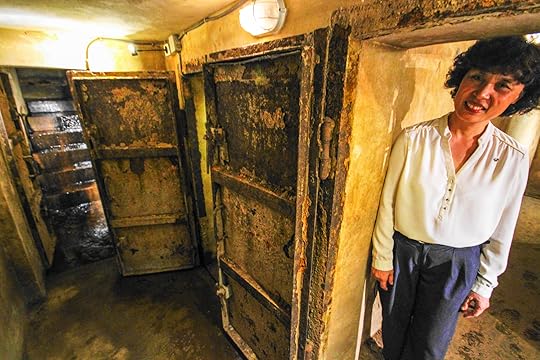
3
In 2011, the bomb shelter pictured above was rediscovered by the Metropole staff during renovations. It has since been reopened as the grand finale of the hotel’s “Path of History Tour.” During the Vietnam War, American anti-war celebrities Jane Fonda and Joan Baez took cover here during their respective stays. Our guide Yen (above), hands us green hard hats as we step into the low-ceilinged, musty bunker. “When I was a child,” she tells me, “I helped my parents dig bomb shelters under our beds. Then I went with the other children to a shelter in the mountains during the war.” Inside a narrow concrete room with water seeping from vents, Yen plays us Joan Baez’s “Where Are You Now My Son?” This sorrowful song was recorded at the Metropole during the Christmas bombings of Hanoi in 1972. The few moments listening to Baez’s recording—under a dim yellow light—are hauntingly surreal.

4
On a damp morning in Hanoi, a rural woman’s traditional conical hat and shoulder pole contrast with a city sprinting towards modernity. Economically, Vietnam is booming. It’s among the “Next Eleven,” a list of rapidly emerging economies throughout the world. During my time in Hanoi, I witnessed shiny new BMWs, Mercedes, and even a Rolls Royce charging through herds of commuters on creaky old bicycles and buzzing scooters with three or four people crammed onto a seat.

5
It’s 6:30am on a Wednesday. The infectious rhythm of the '90s hit “La Macarena” echoes down sidewalks filled with noodle-soup-slurping breakfasters seated on tiny plastic chairs and stools. I follow the clave beat until the narrow street spills onto the wide boulevard that encircles Hoan Kiem Lake. On a corner, the music’s source reveals itself—a dozen middle-aged women dance in unison to the Spanish one-hit wonder. They clap their hands with hips swaying and return my smile as I pass. On the pathways around the lake, people jog, walk, stretch, and practice Tai Chi. One stocky man in blue and red kickboxing shorts spars with a sign post. “Amazing isn’t it?” a man next to me says in an Australian accent. “We spend a fortune on gyms and look, with all they’ve been through, here they are getting on with it. I think in the West, we may have lost the plot.” In the photo above, my cyclo driver poses with his ride after peddling me around Hoan Kiem Lake.

6
The hissing cicadas are deafening as I march up stone steps high above Ha Long Bay. It’s magnificently hot and sweat pours down my face. Among a throng of tourists, I’m on my way to the mouth of Surprise Cave on Bo Hon Island. Made from limestone, it consists of three chambers, each bigger than the next as you continue deeper. Inside, colorful lights display various stalactites and formations that evoke animals, people, and of course a giant phallus, as the tour guide affably points out. In this photo, a fellow traveler stops to admire the expansive ceiling in the cave’s final amphitheater.

7
The Tomb of Tự Đức was built over a three-year period, from 1864 to 1867, for the Nguyen Emperor Tự Đức. A sprawling compound of over 50 structures set amidst a pine forest, the site was not only designed as a burial ground but also as a residence. Despite having 103 concubines who lived with him inside the complex, Tự Đức died in 1883 without fathering an heir. Above, a woman carries her goods down one of the numerous dragon-sided flights of stone steps at the tomb. In the background our guide—and Hue native—Lan, wears her áo dài, a traditional Vietnamese silk outfit.

8
A woman lights incense before praying at Thế Miếu Temple within the walls of Hue’s Imperial City. The enormous collection of 160 buildings set along the Perfume River was built in 1804 by Gia Long, and the Imperial Enclosure inside housed the Nguyen Royal Family. During the Tet Offensive of 1968, the compound suffered massive damage and only ten structures remain today. Walking around the vast site, I find bullet-pocked walls.

9
In the herb garden of La Residence Hotel in Hue, a lizard basks in the morning heat. Hue, the home of the Nguyen Dynasty from 1636 to 1872, has an abundance of local specialties, as the royal family demanded a constant stream of innovative dishes. The hotel’s aptly named restaurant, Le Parfum, serves inventive cuisine in a beautiful art deco setting overlooking the Perfume River. At dinner I order the Vietnamese tapas, a captivating display of jellyfish salad, fresh spring rolls, and a variety of bite-size steamed rice cakes topped with dried shrimp, pork, and green onions. A collage of savory, sweet, and simply undefinable flavors makes it the most intriguing dish of my trip.

10
Golden sand, a calm blue sea, and a slight breeze to cut the brilliant heat. On Vietnam’s central coast, the Nam Hai Resort in Hoi An is a dreamscape of low profile villas set amongst coconut trees overlooking China Beach and the Cham Islands. Although touted as the most expensive beach resort in Vietnam, the atmosphere at the Nam Hai is low key and serene.

11
Near the An Hoi Bridge, locals put the finishing touches on a striking float in celebration of Buddha’s Birthday. In 2014, his birthday was celebrated on May 6th. Bright pink lotus flowers and colorful paper lamps marked the occasion in every city I visited.

12
“Vietnam is changing very quickly. People used to dream of having a scooter or a car. Now they can actually own one,” Nathan, the co-owner of Miss Ly’s Café in Hoi An, tells me. Originally from New York, he’s married to Ly, who does the cooking inside her mother’s centuries-old house turned cozy restaurant. From the adjacent kitchen, Ly churns out fresh Hoi An specialties like fried wontons and white rose dumplings. Above, a plate of local grilled fish with chili and herbs is unwrapped from a banana leaf. Tangy, spicy, moist yet with a perfect char, it’s possibly the best fish I have ever had.
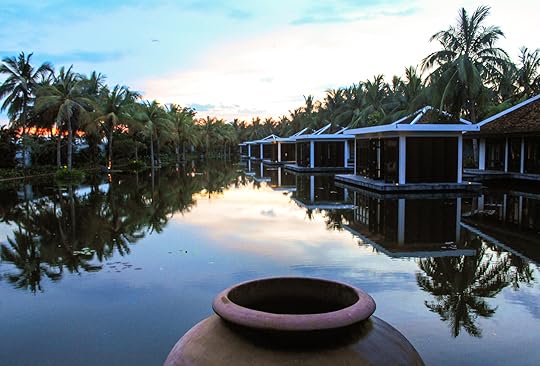
13
In the absolute calm of a sunset moment, I look over the pond at the Nam Hai Resort’s spa. Having just had an hour-long Vietnamese Massage in a waterside room, my mood matches the scene. Walking back to my villa, I get the sensation that I’m floating through the humid, sultry air and decide that anything other than a nap would be blasphemous.

14
From LA to Hong Kong to Hanoi and back again, I flew with Cathay Pacific and their partner Dragon Air. In Cathay’s business class, stewardesses in impeccable red skirts and white blouses attend to your every need. Pale and strange-smelling airplane food was nowhere to be found, as I was served fresh Dim Sum, Wok Seared Halibut, and a silky smooth 2011 Cheval Noir Saint-Émilion. It was the first time in my life that I almost didn’t want to get off the plane.

15
In the remarkably preserved “old town” district of Hoi An, an ancient port city with Chinese architectural influences, a stylish vendor at the market meets my camera with a wide smile. Nearing the end of my trip, it was a gesture that I had grown accustomed to while in Vietnam, where the majority of people smiled, laughed, or even posed for a photo. Initially I found this endearing, lighthearted playfulness perplexing in a country with such a tumultuous past. Nevertheless, on my flight home, with the scents of lemongrass and ginger still tingling my nose, I found myself smiling for no reason. The vibe was contagious.

July 1, 2014
18 countries, 18 ideas of 'beauty'
JOURNALIST AND BLOGGER Esther Honig sent a photograph of herself to nearly 40 professional and amateur Photoshop designers from more than 25 countries. She asked one thing: “Make me beautiful.”
Her project illustrates a stunning cross-cultural interpretation of beauty. Honig proclaims, “In the US, Photoshop has become a symbol of our society’s unobtainable standards for beauty. My project, Before & After, examines how these standards vary across cultures on a global level. Photoshop allows us to achieve our unobtainable standards of beauty, but when we compare those standards on a global scale, achieving the ideal remains all the more elusive.”
Each image in the selection below is a reflection of personal and sociocultural conceptions of beauty — all derived from the same photograph. 
Photos courtesy of Esther Honig

1
Esther Honig: Before & After
Left to right: Original photo of Esther Honig, Morocco, Argentina.

2
Australia

3
Bangladesh

4
Chile

5
Germany

6
Greece

7
India

8
Indonesia

9
Israel

10
Italy

11
Phillipines

12
Sri Lanka

13
Ukraine

14
United Kingdom

15
United States

16
Venezuela

17
Vietnam

Mapped: Fictional film locations
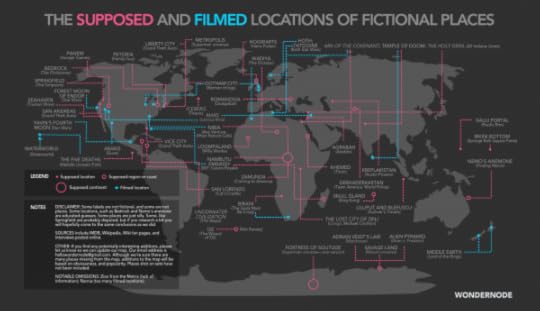
Via Wondernode
YES — I AM THE PERSON who annoys other travelers by pointing out where things have been filmed in any given location. I get a kick out of living vicariously through Harry Potter while visiting Oxford University, or any number of RomComs at any number of New York City landmarks. This map is very entertaining to analyze, but my only criticism is that they left out Narnia.
What’s your favorite film location, real or fictional? 

2022 World Cup should be in the US

(via)
A lot of the news stories have been written about whether the 2014 World Cup should have been hosted by Brazil, a country that — though full of what are possibly the most fanatical soccer fans on the planet — probably could have spent its money more wisely. Because, as it turns out, the conventional wisdom that major sporting events like the Olympics and the World Cup are an economic boon to the host economy isn’t true. In the case of South Africa, who hosted in 2010, it actually cost them billions of dollars in a country where billions of dollars could otherwise make a huge difference.
There’s no reason to think things will be any different for Brazil, and, at the end of the day, the money spent on stadiums used for a month and then abandoned, dismantled, or left as an economic drain on the city, would’ve been more wisely spent on education, poverty alleviation, and crime reduction.
But it’s too late for the Brazil World Cup. It’s already underway, and most of the money’s already been spent. It’s not too late for the 2022 World Cup in Qatar.
Why the Qatar World Cup is a catastrophe
In 2010, Qatar was chosen by FIFA (the Swiss body that regulates international soccer) as the site of the 2022 World Cup. Immediately people started asking, “Hey, isn’t that a desert country? Won’t that be incredibly fucking hot in the summer, when the World Cup is played?”
The answer to both questions is yes. Temperatures in Qatar in the summer can reach into the 120s. The Qatari bid for the World Cup contained a provision for air-conditioned stadiums, which (shock!) turned out to be wildly unsustainable, expensive, and impractical. FIFA then suggested moving the tournament to winter…right smack in the middle of regular league play.
It turns out this absolutely absurd host selection may have been the result of an obscene amount of bribery from the Qataris, and a shocking-if-you’re-totally-unfamiliar-with-how-FIFA-does-business amount of corruption on the part of FIFA. If you want a breakdown of how FIFA is the worst, check out John Oliver’s recent treatment of the issue:
On top of all that, it recently came out that FIFA had received a report during the bidding process that there’s a “high risk” of a major terrorist attack during the 2022 World Cup in Qatar — the only bidding country to have such a risk. The risk was presumably decided to be worth the alleged bribes.
What came before the selection of Qatar as the venue for the World Cup was disturbing, but what’s come after is basically a crime against humanity. More than 900 workers have already died building the country’s World Cup infrastructure. That’s as of this past March, so it’s more than that by now; there’s been an average of one death per day. The International Trade Union Confederation conservatively estimates that over 4,000 will die by the start of the World Cup.
The deaths are in part a result of appalling work conditions, which are at times slavery and at other times indentured servitude, mixed with the extreme temperatures in Qatar.
Recently, FIFA president Sepp Blatter said awarding the 2022 World Cup to Qatar was a “mistake” (presumably because “mistake” sounds better than “crime against humanity”), citing the temperature. He didn’t mention FIFA’s complicity in human rights violations.
Why the 2022 World Cup should be given to the US
Naturally, the World Cup should be moved solely on the basis of the working conditions in Qatar. Several bodies and publications have already called on FIFA to reopen the bidding process, and, obviously, the 2022 World Cup should be moved to the United States.
Admittedly, I’m totally biased because I’m an American soccer fan and would freak the fuck out if the World Cup returned to the States, but there are a lot of reasons why the US should be selected as the 2022 host.
First, we came in second to Qatar for the 2022 bid when the selection process was happening. Granted, considering FIFA’s apparently endemic corruption, that might not be saying much, but there haven’t been any corruption allegations addressing the American bidding process, which one would hope means the US came in second on the merit of its bid, while Qatar bought its way through the door. So a plan for the US hosting the 2022 World Cup already exists, and it’s not too late for us to follow through.
Second, location of the 2018 World Cup (Russia) was chosen at the same time as the 2022 host (both selections were made in 2010). So if the 2022 host were re-designated this year, the US would have the same amount of time to prepare for its World Cup as Russia was allotted.
Third, the US already has some of the necessary infrastructure. We’re chock-full of large stadiums that could be converted into soccer fields, not counting everything we have left over from 1994. If FIFA decides to pull a complete 180 by being responsible and not extravagantly wasteful, they could easily find a number of appropriate stadiums in areas that also serve their other needs, like proximity to hotels for players, officials, and referees.
Fourth, and finally, while it turns out that hosting a major world sporting event doesn’t help a country’s economy, it does increase its overall happiness level. When it comes to the economy, happiness only rises with economic gain to a point — basically, once you’re out of poverty, money’s effect on your happiness plateaus. So, in developing countries, if the end goal is raising levels of happiness, the money would be better spent on stuff like education and poverty alleviation. But in developed countries — like the US — it makes sense to spend big on stuff like the Olympics and the World Cup.
Sure, there are other countries that meet the same criteria as the US. But we’re ready, and as long as we can put it on without any serious human rights violations, we’d be much better suited to hosting the World Cup. America 2022! 

11 Brazilian foods you need to try
The World Cup is going full blast! We Brazilians are proud to host fellow soccer fans from all over and delight them with our warm smiles, excellent music, and delicious food. Everyone at this point may be familiar with Brazilian treats like caipirinha and churrasco, but to truly understand Brazilian food glory you’ll need to familiarize yourself with at least one or two of the dishes listed below. Forget the hotel buffet and go track down these babies in the streets!
1. Torresmo
Not for the faint of heart, this classic side dish to accompany feijoada is nothing more than crispy fried pork rinds. It can be greasy, of course, but when properly done it’s a fantastic petisco (snack) to have with beer at a boteco (informal neighborhood bar) while watching a soccer match.
2. Pão de queijo

Photo: Rodrigo Gianesi
Little fluffy balls of manioc-flour bread with cheese. It’s said that the best come from Minas Gerais, but they’re famous in São Paulo and Rio too. They’re also gluten free?
3. Suco de cajú and its alcoholic bro, cajú amigo
Brazil is blessed with many delicious and nutritive fruits, and the bright yellow cajú (pronounced kah-juh) is among the local favorites. Its juice is bittersweet and amazingly tasty, and if you ever cross paths with the picolé (popsicle) version, get one. Cajú amigo is a batida (shaken cocktail) made with a local liquor like cachaça (sometimes vodka) with ice, sugar, and the crushed fruit.
4. Goiabada
Guava paste with sugar. Lots of sugar. It comes in cream or cascão (hard) versions and is usually served with white cheese in a traditional dessert called Romeu e Julieta. In fancy restaurants in Rio and São Paulo, you’ll often find North American cheesecake and French soufflé versions on the menu.
5. Açaí
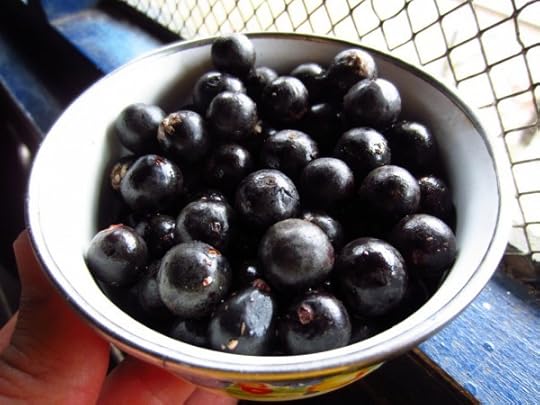
Photo: Eli Duke
In North America it’s a new “wonder berry,” but Brazilians have known about this little purple delicacy for ages. It’s a super favorite, consumed as an icy and creamy after-gym treat, sometimes with muesli, guarana syrup, and/or sliced fresh banana. Believe me, it’s more of a refreshing substitute for a big meal than a snack.
6. Baião-de-dois
A tasty dish from the northern and northeastern states, widely available in big southeastern cities as well. Baião-de-dois consists of rice and green beans (de corda variety) with queijo de coalho (salty white cheese) and carne-de-sol (local jerked beef). It’s common to add vegetables such as jerimum (pumpkin) and macaxeira (manioc) and to pour liquid butter and hot sauce all over it. Finish with a small dose of cachaça and be happy.

More like this: What not to eat in São Paulo (and what to eat instead)
7. Tacacá
A traditional hot soup made of tucupi (manioc sauce), tapioca (manioc flour), and dried shrimp, plus a leafy green known as jambu, which has a numbing or tingling effect on the mouth. The dish is served in bowls and is very easy to find in Amazon cities, northern restaurants, and food stands all over the country. It’s also the best hangover cure in the world (I know it well).
8. Tucunaré and pirarucu
It’s not surprising that the Amazon, being the largest river system on the planet, has plenty of delicious fish to offer. These two giants (pirarucu can weigh 200kg!) are every fisher’s favorites and are easy to find while traveling in the north. They’re firm, white, meaty, succulent, and can be filleted, stuffed, or baked whole.
9. Cuscuz Paulista

Photo: Hanny Guimarães
Mixing two of the most popular Brazilian ingredients (corn and manioc flour), cuscuz comes in many variations, the Paulista being the most famous. It’s basically a salty cake-like recipe made with flour and filled with ingredients that can vary from canned sardines (yes!) to palm hearts, boiled eggs, tomatoes, and olives (often all together). Every family has its favorite recipe. I love it.
10. Coxinha
Deep-fried dough filled with chopped chicken breast. It’s available everywhere and best enjoyed with a can of the Brazilian soda Guaraná. Please note that the word coxinha is also slang for something or someone uninteresting, bland, and tasteless — quite contrary to the snack.
11. Caranguejo
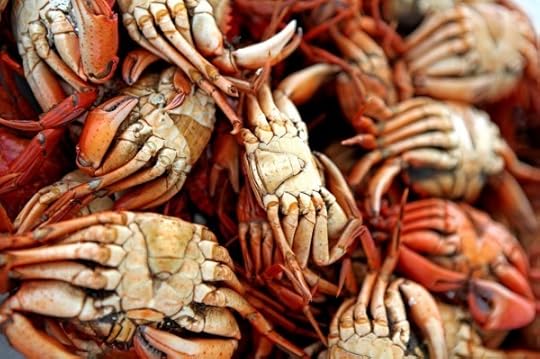
Photo: Violeta Teixeira
Unmissable if you’re in the northern coastal cities of Fortaleza and Natal, it’s nothing more than crab (usually the goiamum variety) cooked inside the shell. Just break the body and claws with a small hammer or nutcracker to get at the white, delicate, delicious meat. It takes some work, not to mention practice, but don’t be shy — you’re allowed to make a mess. For those who feel lazy, ensopados (stews), casquinhas (meat baked on half shells) and patinhas (deep-fried claws without the shell) are always available. 

How to piss off someone from Hawaii

Photo: m a n d o l i n
Ask us if you need a visa to visit Hawaii.
Acquire some basic geographical knowledge before you get to Hawaii. I know it sounds silly to you, Matador reader, but some people really believe Hawaii isn’t a part of the United States. And, yes, we do speak English here.
Treat us like a voluntary tour guide.
We’re proud of our ‘aina and our culture, and we’re more than happy to share them with you. But we’re not here to be your tour guide. There’s a point when we really stop caring about your incessant requests for a guided tour.
No matter how breathtaking the natural scenery we’re surrounded by, our lives in Hawaii are just as stressful and hectic as yours — sometimes even more so. The cost of living in this state is twice that in the rest of the country, while our wages are well below the national average. Some of us have to work two jobs to pay off our debts. Don’t be the nasty visitor and needy friend who expects us to drop everything to take you around the island when our boss just asked us to work overtime.
Ask if we have electricity or internet.
We’re living in the 50th state of the United States, not just some deserted island in the middle of the Pacific. Of course we have electricity, and of course we have internet. Those who ask us this question should remember that Hawaii had electricity and telephone service earlier than the White House.
Console us with “but you live in Hawaii” when we seek your shoulder to lean on.
If we’re upset and seeking consolation from you, please be nice. Let us shed our tears, and keep your jealousy to yourself. You have no idea how much your dismissive “but you live in Hawaii” hurts our feelings, as if living here is the cure-all for the stress and problems of modern-day life.
Assume we just go to the beach all day, every day.
I’m sorry to break this to you, but we really don’t have time to go to the beach every day. Some of us haven’t been to the beach in years, even. We have to spend eight hours or longer in front of our desks at the office and work hard, just like you do. When our daily work is done, we still have to deal with the tedious pau hana (after-work) traffic.
As you may know, Honolulu has the nation’s second-worst traffic, just behind Los Angeles. We waste a total of 60 hours on average annually, which equates to over a week of surfing time, just sitting in the traffic.
Tell us we pronounce “Hawaii” funny.
Stop. We live here. We know how to say it. You pronounce it funny.
Dress up to go to the beach.
Come on. We’re informal people, and the beach is an informal place. Leave your suits and pants at home, avoid makeup, your LV purse, and your Chanel boots — they’re not fashionable and aren’t welcome on any beach in Hawaii. Your swimsuits are all you should be wearing.
Steal our slippers at the party.
Don’t take away our precious flip-flops if you can’t find yours. You don’t want to get beat down in the parking lot at midnight, and we don’t want to head straight to the slipper aisle at the grocery store barefoot.
Jaywalk.
Hawaiian cops make a profit by tagging jaywalkers. Even if you’re caught walking between the blinking yellow and red lights, the police won’t show you any sympathy. Worst of all, after your $70 jaywalking ticket is issued, you’ll be warned that the next time the fee will be doubled.
Mess with Mother Nature.
Don’t let us catch you throwing trash into the ocean. We’re proud of our unspoiled natural wonder. We take away everything we bring to the beach at the end of the day and throw our trash in the nearest litter bin.
If you’re at the beach, be respectful of nature. Always leave the ocean and sand as clean as you found it, or cleaner. Always.
Tell us you don’t like Hawaii.
If you feel the cost of living in Hawaii is high and the pau hana gridlock is ugly, that’s fine. However, I’m sorry the breathtaking natural scenery, laid-back pace of life, and aloha spirit of the people doesn’t appeal to you. If that’s the case, you certainly won’t be missed. 

America has its own soccer hooligans
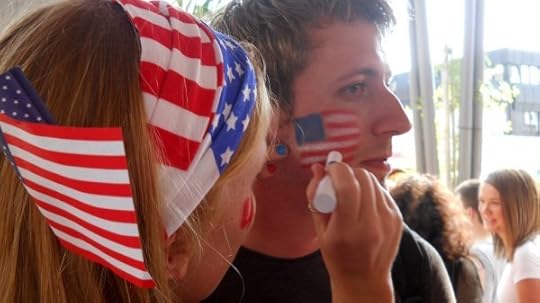
Photo: Richard Matthews
Once you’ve been to a soccer match in the UK, all sports fans in the United States feel a little subdued and uninteresting. Yeah, we can be loud, but do we have wild, rhyming, occasionally racist cheers for every single player on the team? Are we willing to live and die for literally nothing except our country, family, and team? Usually not.
There are a lot of American sports fanatics, but, as a country, we’ve never had to worry about bands of roving hooligans getting into fights with members of other teams.
But now, in the midst of probably the most exciting World Cup ever — and this is coming from a guy who’s watched a total of one other World Cup — we’ve finally got a prominent group of our own national hooligans: the American Outlaws. The Outlaws don’t call themselves hooligans, and, to be fair, they’ve never been accused of being violent racists or of staging back-alley brawls with members of opposing national teams, but if you’ve watched one of the US games in your local bar, the Outlaws are the ones responsible for making the game exciting.
And, ultimately, that’s what the good kind of soccer hooligan does. They provide the game with the electricity that makes it truly enjoyable to watch. I remember seeing it from Chelsea fans when I went to Stamford Bridge in London a few years ago, and then I felt it again last Sunday watching the US-Portugal game with a big group of Outlaws at a local bar.
Welcome to the wonderful world of international soccer, America. You can thank the Outlaws. 

40 of the world's 'second cities'
THE BIGGEST CITY in a country always seems to get the most attention, and while tourists flock in droves to these “first cities,” it takes a traveler with a slightly different agenda to skip them (and thereby many of the iconic sites the country is known for) and head to the second cities instead.
The world’s second cities, many of which are capitals and almost all of which are ports, can make for a much more authentic and perhaps even more culturally meaningful experience.
Here are 48 cities that prove that being the second largest does not necessarily mean they’re second in importance. 
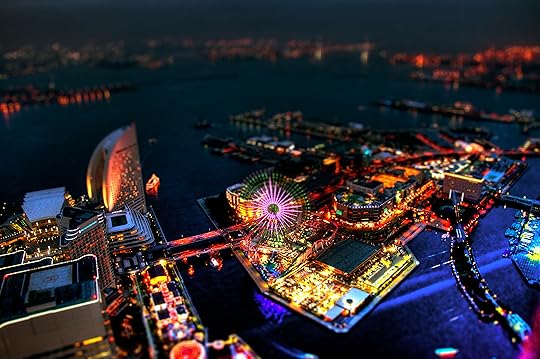
1
Yokohama, Japan
Yokohama is home to 3.7 million people (second to Tokyo’s 13 million people) and the second largest suburb in the world, behind Taiwan’s New Taipei (as of shortly after Christmas, 2010). A humble fishing village during feudal times, today it is the hub for Nissan Motor Company and several major Japanese technology and shipping conglomerates.
(via)
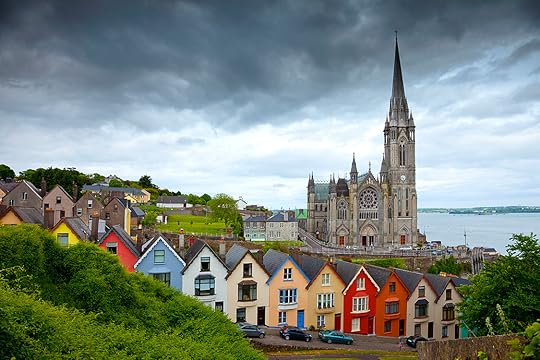
2
Cork, Ireland
At 119,230 people over 14.4 square miles, Cork may not be the biggest second city on the list, but with a nickname like “The Rebel City” it might be one of the most badass. The city has quite a variety traditions, including special ways to prepare what some Westerners might view as leftover waste from the butchering process, such boiled pigs feet (crubeens), and intestines paired with blood sausage (tripe and drisheen).
(via)
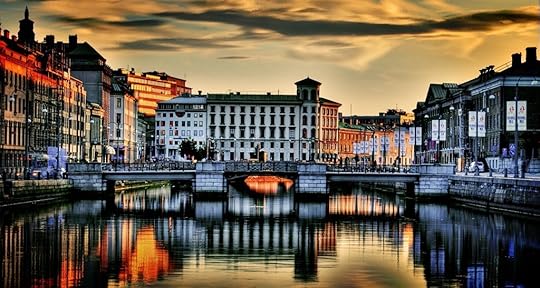
3
Gothenburg, Sweden
The fifth largest city of the Nordic countries, Gothenburg, Sweden, is home to over half a million people and one of the largest football tournaments in the world, the Gothia Cup. As a “gamma” level global city, it has earned its place on the world stage for its advantageous trade location, noteworthy manufacturing industry, and innovation (ranked 12th worldwide by Forbes, 2013).
(via)

4
Ankara, Turkey
Second to Istanbul, Ankara isTurkey’s capital and has a population of almost 4.5 million people. It's also famous for a number of native species and their products, including mohair from the long-haired Angora goat, fur from Angora rabbits, Muscat grapes, and the Turkish Angora cat.
(via)
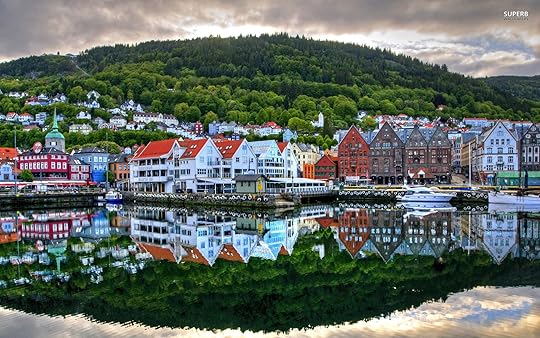
5
Bergen, Norway
On the western coast of Norway, 278,000 people form the city of Bergen. It is one of Norway and Europe’s key ports for tourism, given its proximity and access to the famous fjords of the region. Recently, Bergen has become well known as the “street art capital of Norway;” the city council has begun protecting key pieces of art with protective glass and plans to be a leader and stronghold for that particular form of media by 2015.
(via)
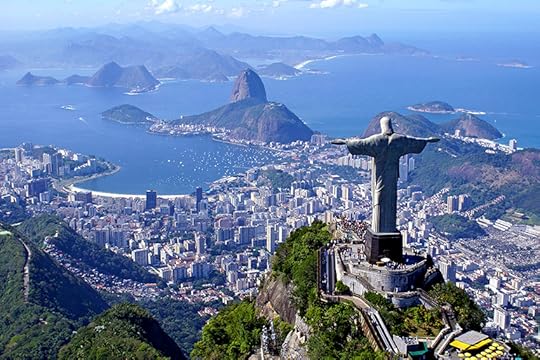
6
Rio De Janeiro, Brazil
6.3 million people (and one giant statue of Jesus) call Rio home, making it the second largest city in Brazil, the third most populous area in South America, and the 26th largest city in the world. It is also world famous for its particular brand of Brazilian Carnival, the annual celebration of Lent featuring ornate costumes and incredibly detailed parade floats.
(via)
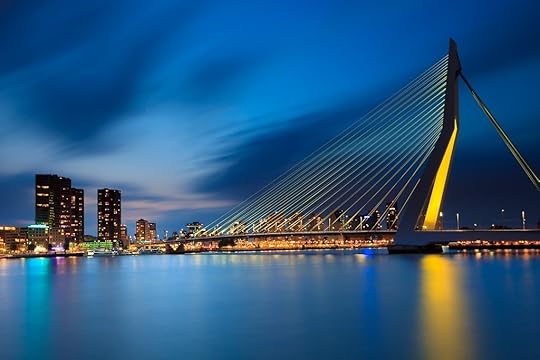
7
Rotterdam, Netherlands
True to form, Rotterdam, the second largest city in the Netherlands, behind Amsterdam at 618,467 people, is also a port. In fact, its location as the travel and trade nexus of the continent has earned it the nickname “Gateway to Europe.” Rotterdam is also home to the Erasmus University Rotterdam of international acclaim, with its business courses ranking in the top 10 both in Europe and worldwide.
(via)

8
Kosice, Slovakia
Sharing the 2013 “Cultural Capital of Europe” title with Marseille, Kosice might be the most epic little city you’ve never heard of. The 241,000 inhabitants celebrate this new-found title, earned through the introduction of a “creative economy” based on the fusion of an industrial economy with arts and culture and placing a key emphasis on sustainability (starting with the repurposing of defunct spaces for creative industry).
(via)
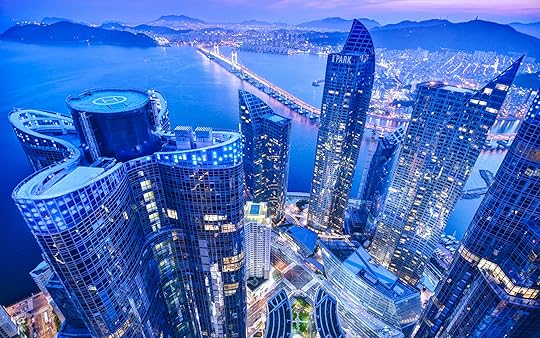
9
Busan, South Korea
It seems like the only South Korean city we’re hearing about these days is Seoul, but as the largest port city in South Korea, and home to 3.6 million people, Busan should at least get to share some of the spotlight. Plus, it’s home to the famous 7.5-mile Haeundae Beach, as well as the world’s largest department store.
(via)

10
Porto, Portugal
The famous birthplace of port wine, Porto (at a population of 1.3 million) is part of an elite quintuplet of global cities on the Iberian Peninsula (along with Madrid, Valencia, Lisbon, and Barcelona). Coincidentally, in addition to port wine, Porto is also a chief producer and exporter of cork.
(via)
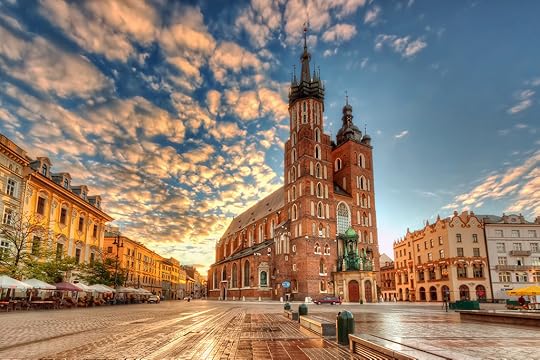
11
Krakow, Poland
Dating back to the 7th century, Krakow is one of the oldest cities in Poland in addition to being its second largest (at 758,334 people as of the end of 2012). Dubbed the “European Capital of Culture” by the EU in 2000, the country takes great pride in its art events and collections, orchestras, and host of famous theaters for the performing arts (including the goliath Juliusz Słowacki Theatre).
(via)
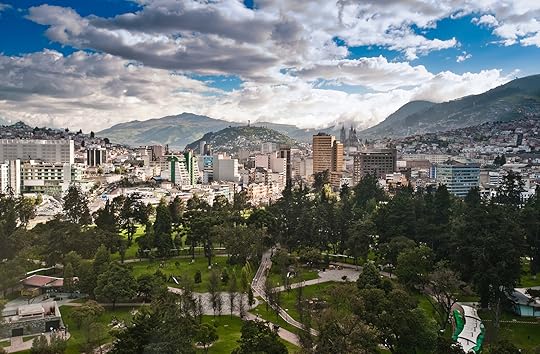
12
Quito, Ecuador
As the capital city of Ecuador, Quito is home to 2,671,191 people as of 2014 (considerably behind the 3.75 million people of Guayaquil). 9,350 feet above sea level, Quito stands as the world’s highest official capital city, and the historic center there was one of the world’s first UNESCO cultural heritage sites.
(via)

13
Milan, Italy
London, Paris, Milan—the trio of famous European fashion footholds of which Milan stands out as the only second city. With a population of 1.3 million, Milan’s influence in industry, fashion, design, commerce, and world finance has made it a key “global city,” with far-reaching impact throughout the world. Milan also sees over 6 million tourists a year, with many flocking to the Santa Maria Delle Grazie to view the variety of Leonardo Da Vinci murals, including the original "Last Supper."
(via)

14
St. Petersburg, Russia
At nearly 5 million inhabitants, St. Petersburg is the northernmost large city in the world, and one of the largest cities on this list, though still smaller than Moscow. As Tsar Peter the Great’s cultural capital of Russia, St. Petersburg is home to 221 museums, 80 theaters, 2,000 libraries, dozens of historical buildings, 45 galleries, and hundreds of festivals, making it an incredibly attractive tourist destination.
(via)

15
Melbourne, Australia
With a population of 4,347,995 (just behind Sydney’s 4,757,083 as of 2013), Melbourne may not be the most populous city in Australia, but it has ranked among the top three most livable cities in the world every year for over a decade. As Australia’s financial powerhouse, Melbourne also ties Oslo as the world’s fourth most expensive city to live in. Sometimes called “Australia’s cultural capital,” it is a hub for arts, music, sports, and dance (and is the birthplace of my personal favorite dance, the Melbourne Shuffle).
(via)
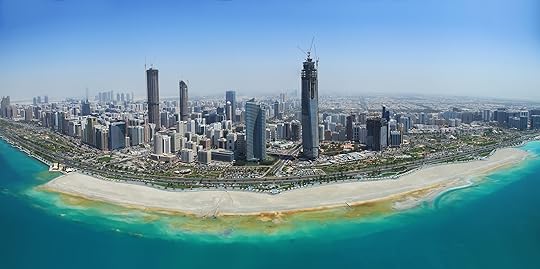
16
Abu Dhabi, United Arab Emirates
The capital of the UAE, Abu Dhabi is located on the Persian Gulf and has a population of 921,000 as of 2013. As a world-titan of the oil and natural gas industries (9% and 5% of the world’s supply, respectively), it is considered one of the richest.
(via)
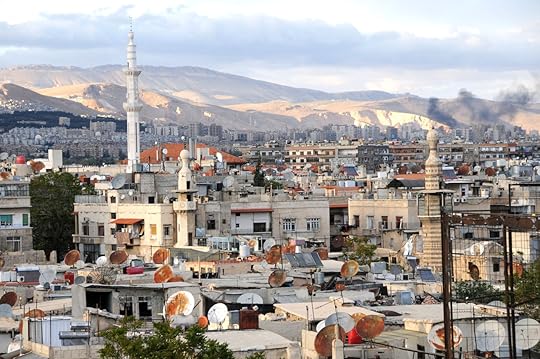
17
Damascus, Syria
Also known as the “City of Jasmine,” Damascus is considered one of the oldest cities to have remained continuously inhabited since its founding, between 2000-1000 BC. Today, at 1,711,000 inhabitants strong, Damascus is home to an annual international trade exposition and the only stock exchange in Syria, a testament to its financial power and relevance.
(via)
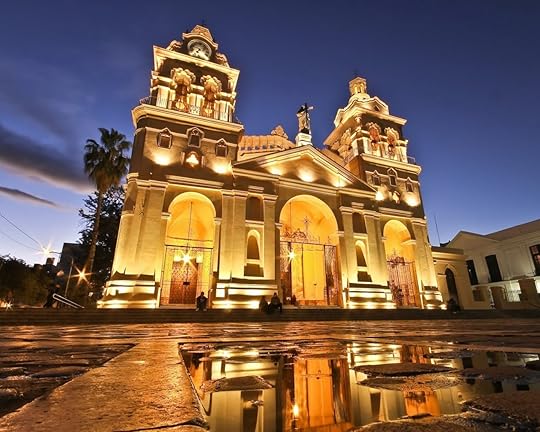
18
Cordoba, Argentina
Founded in 1613, Cordoba, located in the middle of Argentina, is home to some of the oldest buildings in the country (with the majority in the UNESCO world-heritage Jesuit Block and dating to the 17th century). With a population of just over 1.3 million, Cordoba’s six universities and host of graduate schools makes it a key hub for higher education in Argentina.
(via)
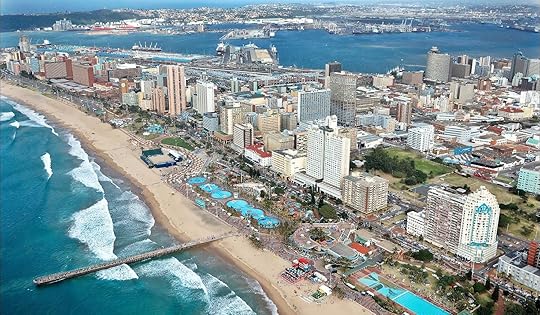
19
Durban, South Africa
Both the second most populated, and second most important industrial manufacturing site in South Africa behind Johannesburg, Durban sets itself apart for being the largest port in South Africa. It's home to about 600,000 people as well as several major tourist attractions, including the Golden Mile, a mile of beach stretching from uShaka Marine World in South Beach, to Suncoast Casino and Entertainment World.
(via)
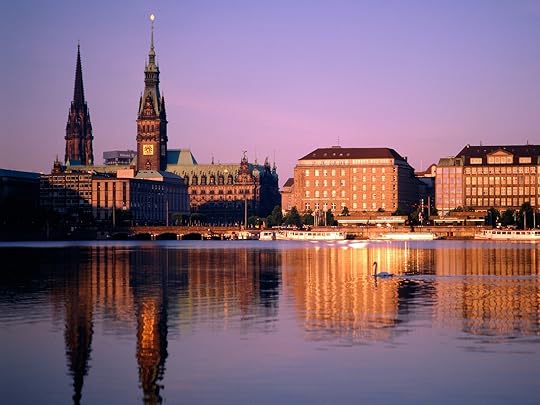
20
Hamburg, Germany
The eighth largest city in the EU, Hamburg has a population of over 1.8 million and is home to the Port of Hamburg on the Elbe, the second largest port in Europe and tenth largest in the world. Hamburg has the highest GDP in Germany, with a significant fraction of that coming from tourism to the city, an industry which brings in 9.3 billion euros and employs almost 200,000 people. Hamburg recently fell from 10th (2010) to 17th (2012) most livable city in the world, which is measured by the Mercer Quality of Living Survey.
(via)
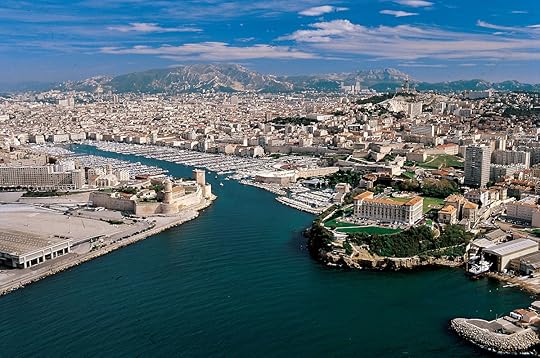
21
Marseille, France
Marseille is the largest French city on the Mediterranean coast and historically has been France’s most significant shipping port. At a current population of 853,000, Marseille is dwarfed by the 2.3 million people of Paris, but it has a history that stretches back centuries before Paris conceivably existed (with cave paintings in the region dating back to 27,000-19,000 BC, compared to 9000-7500 BC—the oldest ruins found in Paris). Today Marseille is a major tourism hub for France, drawing 4.1 million visitors in 2012.
(via)
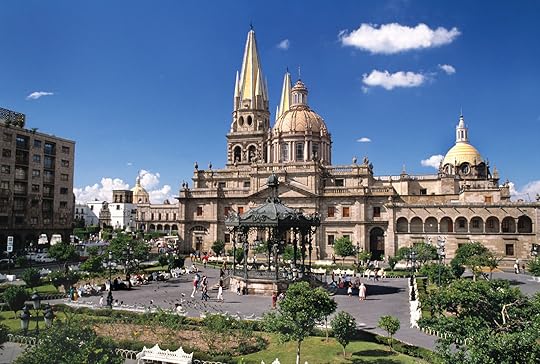
22
Guadalajara, Mexico
With only 1.5 million people compared to the 8 million living in Mexico City, Guadalajara has managed to maintain strong ties to its heritage and traditions (such as mariachi) making it a key site for cultural tourism. Located on the western side of Mexico, Guadalajara is one of the few to make this list as a leader of industry without being a major port city.
(via)
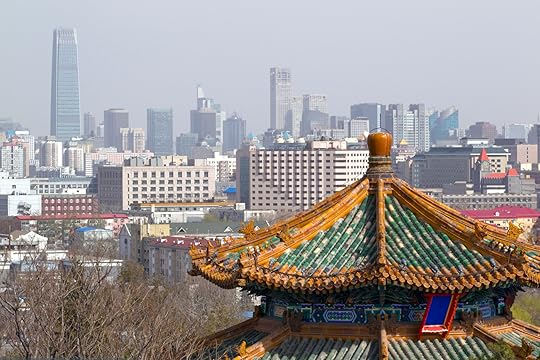
23
Beijing, China
It should be no surprise that Beijing makes this list. At a whopping 21,150,000 inhabitants as of 2013, Beijing is not only the second largest city in China (behind Shanghai’s 24 million) but one of the largest cities in the world. With a rich history spanning 3,000 years, today Beijing stands as the last of the Seven Ancient Capitals of China, and is the political, cultural, and educational heart of China.
(via)

24
Alexandria, Egypt
Though it is the second largest city in Egypt (behind Cairo), Alexandria is the largest coastal city on the Mediterranean, which has allowed it to function as one of the most prosperous shipping and trade ports in history. Founded in 331 BC by Alexander the Great, it was also the second most powerful city in Antiquity (behind Rome). Today, Alexandria is home to 4,546,231 people, and still processes more than three-quarters of Egypt’s imports and exports.
(via)

25
Delhi, India
Of the 1,255,720,200 people currently living in India, about 11 million of them live in Delhi. Yet, the rapid expansion seen throughout India and specifically in Delhi has led the census to estimate that Delhi will soon surpass Mumbai as India’s first city, while India grows to surpass China as the world’s most populous country (which the UN suspects will occur in 2028). With a strong history as several-time capital of India’s various empires, the city is peppered with over 1,375 historic buildings, sites, and monuments.
(via)

26
Antwerp, Belgium
At a population of just over half a million, Antwerp isn't even a third as populated as its sister-city Brussels, though it's almost half as big by area. The city gets its name from Antwerpen, which loosely translates to “to throw a hand.” As local legend has it, the giant Antigoon monitored the passage between the banks of the Scheldt River and, as penance for refusing to pay his toll, he would remove a hand from travelers who didn’t pay and toss them into the river. The mythic hero Brabo killed Antigoon and took one of his hands and tossed it ceremoniously into the water. The city is so proud of this folkloric heritage that a huge statue commemorating the event (featuring a guy throwing a severed hand) stands in front of the town hall.
(via)
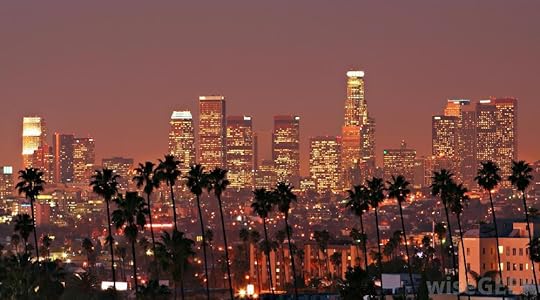
27
Los Angeles, United States
The most populous city in the state of California, and second most in the United States, LA has a population of nearly 4 million. An entertainment capital of the country and the world, Los Angeles is home to Hollywood and a hub for numerous film, television, and music production companies.
(via)

28
Aarhus, Denmark
Aarhus, on the east coast of Denmark, is the seat of the council and main port for the region, and has over 1.2 million people living in its metropolitan area. The oldest city in Scandinavia, artifacts have been found in Aarhus that date back to 770-948 AD. A key historical stronghold for Viking people, the city’s location near Germany and the Baltic countries made it a prosperous trading center, and today it is home to one of the largest harbors for industrial container shipping in Northern Europe.
(via)

29
Tel Aviv, Israel
Due to its collection of Bauhaus buildings, the White City in Tel Aviv was crowned a UNESCO World Heritage Site in 2003 and is a hub for arts, culture, and nightlife in Israel. Ranking highly on such lists as Lonely Planet’s “Hottest Cities for 2011,” and National Geographic’s “Best Beach Cities in the World” (placing 3rd and 9th, respectively), Tel Aviv is not only home to 414,600 people, but also to one of the most incredible fountains. Created by kinetic artist Yaacov Agam, “Fire and Water” is an icon the city is quite proud of.
(via)
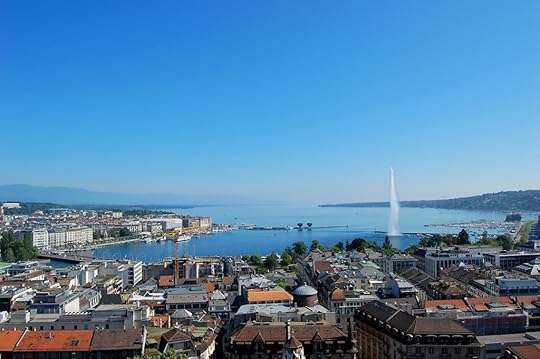
30
Geneva, Switzerland
Practically the headquarters of the United Nations, Geneva is the quintessential global city, history’s home to international politics. The 194,458 people living in Geneva enjoy the third best quality of life worldwide, which is probably due to the fact that Geneva ranks as the ninth most significant competitive financial center.
(via)
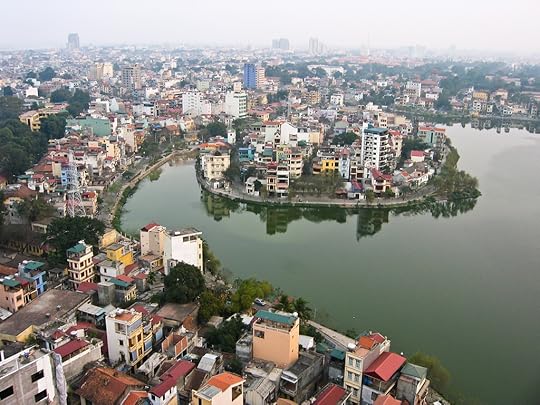
31
Hanoi, Vietnam
Founded in 1010, Hanoi (Vietnam’s current capital) is located on the Red River and home to 2.6 million people. Today, Hanoi is a bustling metropolis, with over 100 skyscrapers that each tower above 300 feet, and has made its name as a major tourist destination as one of the cheapest cities in the world for a short stay.
(via)
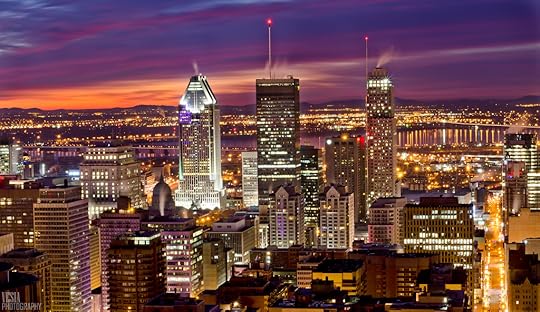
32
Montreal, Canada
With the largest GDP in Quebec, and the second largest in Canada, Montreal is a powerhouse of a second city. Named after the tri-peaked Mount Royal at the center of the city, its 1,649,519 inhabitants make this the eighth largest city in North America.
(via)
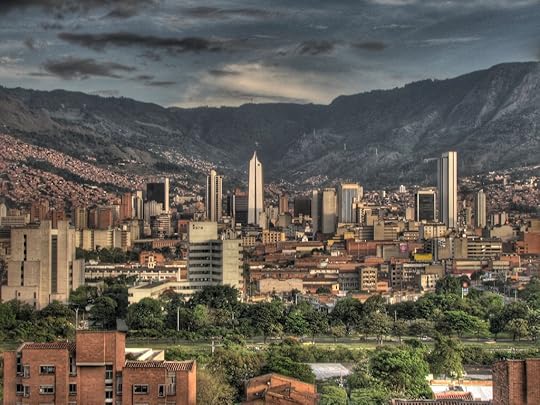
33
Medellin, Colombia
In the heart of one of the northernmost valleys in the Andes live the 2.4 million people of Medellin. Recently, Medellin was put on the map in a 2012 nomination for Most Innovative City of the Year, for advances in public transit (including a bike-share program and green improvements to the metro system), the addition of the España Library and Moravia cultural center, and the world’s longest outdoor escalator.
(via)
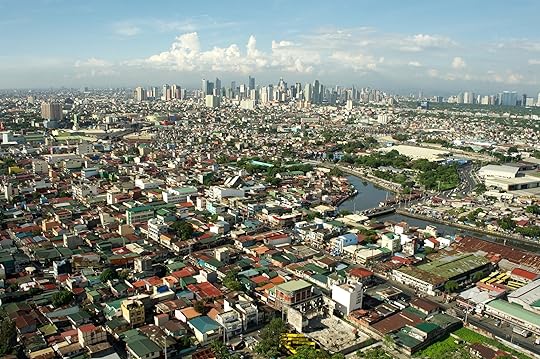
34
Manila, Philippines
While Metro Manila is certainly the population hub of the country, Manila itself technically only contains 1.7 million people, ranking it second to Quezon City. As one of the most densely populated cities in the world, Manila is also unfortunately one of the most heavily polluted. With an excess of automobiles and improperly disposed of industrial waste, over 4,000 of Manila’s residents die annually as a result of air pollution, and several rivers in the area are now devoid of life.
(via)

35
Arequipa, Peru
With a population of just 861,000, Arequipa lags behind Lima's millions. The historic district is a UNESCO World Heritage Site and is instrumental in drawing tourists to the city.
(via)
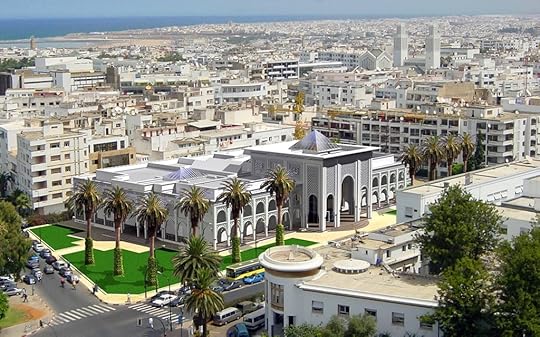
36
Rabat, Morocco
Capital and second city of Morocco, Rabat is the home of about 1.77 million people as of 2013. Translating roughly to “fortified place” in Arabic, the city (a key political and tourist hotspot for the country), was named CNN’s second “Top Travel Destination of 2013.”
(via)
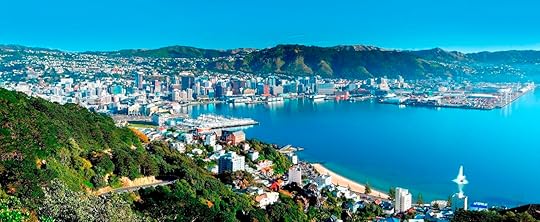
37
Wellington, New Zealand
Both second most populated city in NZ and the southernmost capital city in the world, Wellington is also one of the most densely populated cities in the country (at about 400,000 inhabitants). In spite of this, it ranks 12th in the world for livability. Wellington is also the chief governmental center of New Zealand and is the main location for the New Zealand parliament, foreign diplomats, and embassies.
(via)
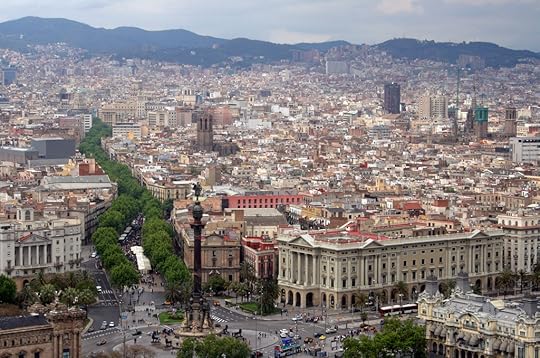
38
Barcelona, Spain
Despite its 1.6 million native inhabitants, Barcelona is a tourist city, seeing several million annually, which puts it on the map as the 10th most visited city in the world. Yet, unsatisfied, Barcelona has been working to become a fashion capital of the world as well, and finally achieved the title as third most important capital in fashion as of 2012, based on the assessment by Global Language Monitor.
(via)
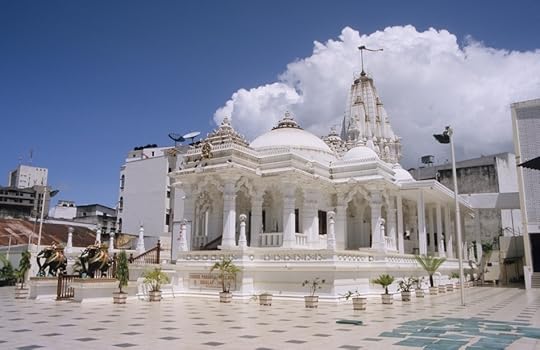
39
Mombasa, Kenya
Continuing the trend of “large port makes for strong economy and great second city,” Mombasa, today at 1.2 million people, is one of Kenya’s major cultural and economic powerhouses, and a key center for tourism. Fun fact: As of 2008, Mombasa and Honolulu are now considered sister cities.
(via)
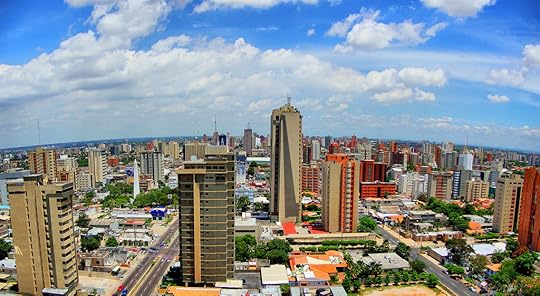
40
Maracaibo, Venezuela
The 1,495,200 inhabitants of La Tierra Del Sol Amada (Maracaibo’s nickname, translating to “the beloved land of the sun”) enjoy year-round temperatures in the 90s, making it one of the hottest cities in Venezuela. It's the birthplace of “Gaita” folk music—the name, which translates to “goat,” may stem from the type of animal skin used to make the furro instrument.
(via)

June 30, 2014
Santiago erupts as Chile score [vid]
CHILE SADLY EXITED the World Cup this weekend in an incredible nail-biter of a match against tournament favorites Brazil. They should be remembered as having an incredible tournament up until then, though, and for also producing one of the most delightful viral videos of the 2014 World Cup.
The video is titled “The Screaming of Santiago,” and was taken from a building overlooking the Chilean capital just as the Chilean men’s team scored their second goal against the global powerhouse of Spain earlier in the tournament.
It’s mind-blowing — the entire city erupts. Chile ended up winning that match and shocked soccer fans from around the world by eliminating Spain — the defending champions — and going on to finish second in their group. 

9 natural springs to cool off in
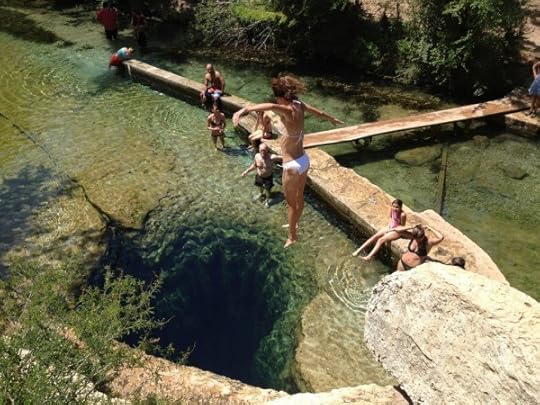
(via)
This karst spring in the Texas Hill Country near Wimberley is well-known for its extensive cave system, particularly Notably the cave entrance visible just below the water’s surface. Many visitors dive or jump into the four-meter-wide opening; for those seeking a little less action, Jacob’s Well is ideal for wading and cooling off.
2. Ichetucknee Springs State Park, Florida
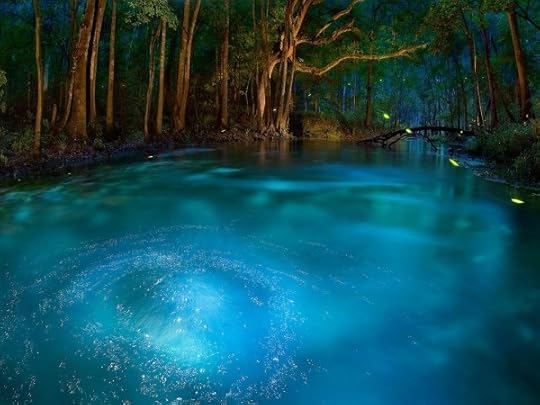
(via)
Ichetucknee Springs is a 50-minute drive from Gainesville. Tubing is extremely popular here, and the Blue Hole Spring, the largest in the area, draws a lot of SCUBA divers. Typical of Florida springs, the water temperature remains at 68-72 degrees Fahrenheit.
3. Ginnie Springs, Florida
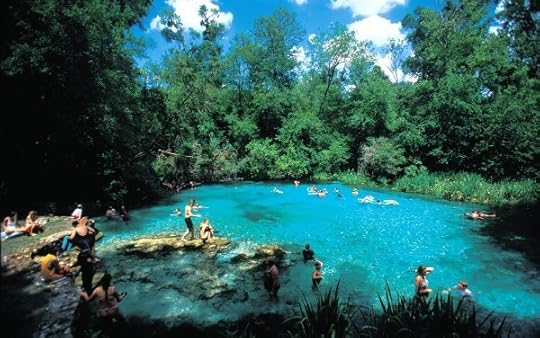
(via)
Privately owned, Ginnie Springs attracts cave divers from all over as the spring, which feeds the Santa Fe River, allows entry to extensive passages and caverns. The Devil’s Eye system (which can be accessed through several entrances) contains over 30,000 feet of mapped passageways.
4. Bennett Spring State Park, Missouri

(via)
With an average flow of 100 million gallons of water daily, Bennett Spring offers no shortage of area for activity. Hiking, camping, and canoeing are all popular — but the main one? Fly fishing. Rainbow trout and brown trout can be found in the spring, resulting in anglers lining the spring daily.
5. Balmorhea State Park, Texas
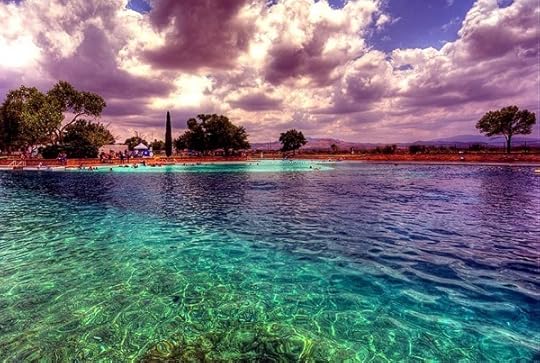
(via)
Fed by San Solomon Springs, Balmorhea State Park’s water attracts visitors from all over looking to cool down. What do they find? A pool with a diving board — but this pool isn’t chlorinated, and it happens to have plenty of fish in it. At 25 feet deep, it provides for an interesting SCUBA and swimming location.
6. El Dorado Swimming Pool, Colorado
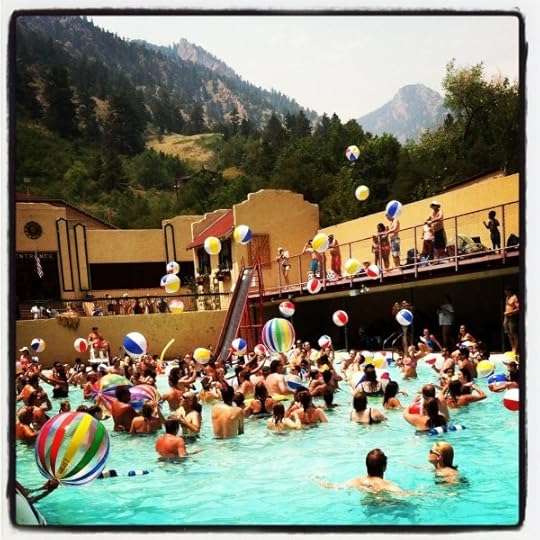
(via)
While it may appear to be a simple pool, it’s actually fed by an artesian spring in the old resort community of El Dorado Springs, in Boulder County. Pool parties pop up at times, while a slide and diving board are also available.
7. Blue Hole of Santa Rosa, New Mexico
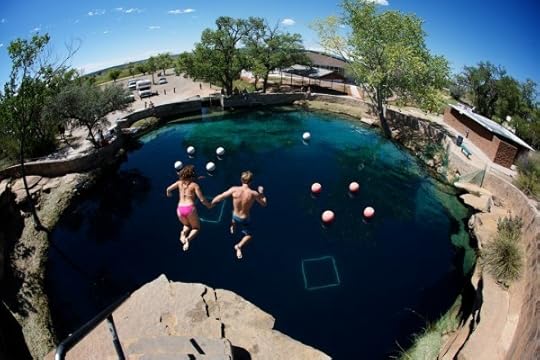
(via)
An artesian well in central New Mexico, the Blue Hole of Santa Rosa is one of the most-visited sites in the United States for SCUBA training. The temperature is a constant 64 degrees Fahrenheit. Once a fish hatchery, the pool is 80 feet in diameter at the surface, but reaches 130 feet in diameter at the bottom of the pool.
8. Blue Hole, Texas
Yes, another Blue Hole. And this one’s also in the Wimberley area. Visitors can spend hours floating around in inner tubes; those looking for some airtime can use the rope swing that hangs from one of the hundreds of cypress trees on the bank.
9. Juniper Springs Recreation Area, Florida
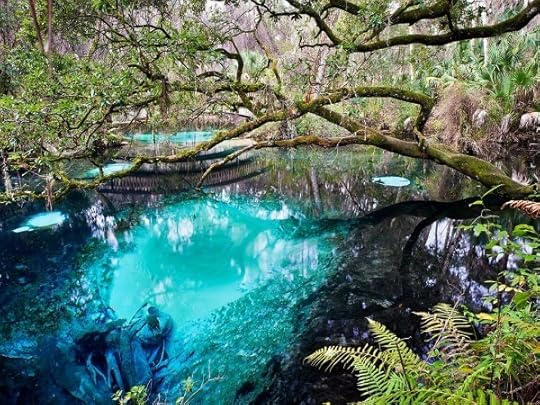
(via)
Juniper Springs is located in the Ocala National Forest, which is the second largest national forest in the state of Florida. The springs, surrounded by subtropical foliage, look like a hideout straight out of a movie. The nearby cabin is so popular that reservations are decided by lottery. 

Matador Network's Blog
- Matador Network's profile
- 6 followers



